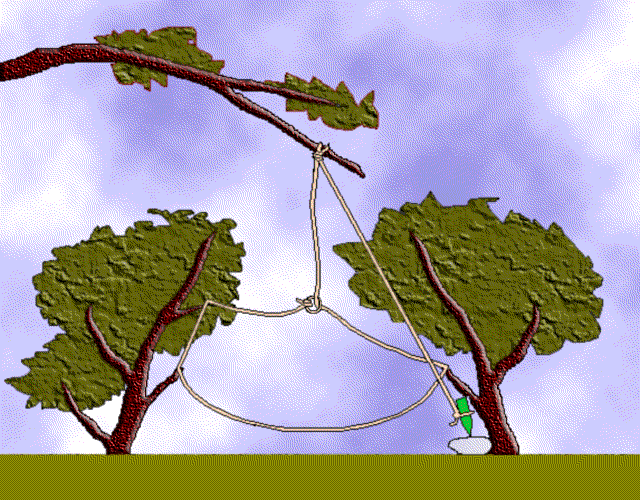
RABBIT SNARE
Rabbits, being very common worldwide, are a good wild game food. They taste like chicken, and one good sized rabbit has about the meat content of a whole chicken. They can typically be found grazing in fields and clearings where grasses and other low lying plants are found. Watch to see where they enter and exit these areas to provide the locations for snares. Some people have been known to add impassable brush and wooden stakes along both sides of the path leading to the trap creating a funnel effect. They can then drive rabbits or other small game in the direction of the trap and be relatively sure that the game will head straight into the snare.
The Rabbit Snare can be used for many types of small game depending on how and where you deploy it. It consists of a noose loosely draped over twigs, brush, or any low-lying points where you can drape it. The noose is smooth cord that can easily slide through the small metal ring it is tied to (small key-rings work very well for this). The key to this snare is the bowed branch overhead, and the catch or trigger mechanism. As you can see in the diagram below, my trigger consists of a very simple stake that is wedged at an angle very close to that of the line to the branch. It is also sharpened and sits on a smooth rock so that any movement at all will free it.
A rabbit is not very smart, and assumes that the string across its path is simply grass, and typically does not slow down. The looseness and breadth of the noose allows the game to proceed a couple feet before it tugs the branch and releases the catch.

Note: In this picture I have made the cord stand out, but only so that you can see it easily in the example. In reality, I would use either the green para cord or the green heavy (80lb test) fishing line for this. Also, there are MANY types of catches and triggering mechanisms, but this one is quite simple, and requires no fancy whittling skills. The KISS (Keep It Simple, Stupid) principle is always best in the woods (and elsewhere).
Note: You may want to trim back foliage on the overhead bent branch. Otherwise, wind can sway it, releasing the trap prematurely.
CLICK HERE TO RETURN TO PRIMITIVE HUNTING AND SNARING PAGE